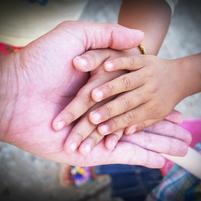At 106 years old and despite having already gone through primary school–as well as a career as a teacher and fifty years of retirement – Ingrid Sandberg got an official letter from Sankt Pers Primary School, in Sweden, informing her she was due to join the other first-graders when school started in the autumn. The Sankt Pers School’s administrative system was calling on all children born in 2010. Ingrid Sandberg, however, was born in 1910, not in 2010. And that was not even the first time that Ingrid received a call like that. The year before, she had also received a notification for a pre-school class. The computer had not been able to process three digits of information for age and therefore assumed Ingrid was six years old.
Despite her administrative enrolment in first year of primary school, Ingrid decided not to attend regular classes. Nonetheless, her classmates felt she belonged in their class, so the students sent her letters and drawings, and went to meet her at Vätterngården, the nursing home where she lives.
From a gerontological point of view, coming to terms with ageing challenges does not mean merely talking about older people. In line with the life course perspective, ageing is a process that occurs within the context of all age cohorts. Every single person starts their own ageing process from the moment of birth and hence we are all ageing together. From that perspective generations share the same present, but they also share the same process: the process of time's passage. Furthermore, interactions among the various age cohorts have been seen by researchers and practitioners as catalysts of meaningful connections as they complement each other’s knowledge, talents, and perspectives of life.
This highlights the fact that Information and Communications Technology (ICT) appears to be a promising way to foster intergenerational connectivity. The administrative system error at Sankt Pers School was able to re-connect different generations in an unexpected way, spanning a century. Most, if not all– intergenerational researchers would probably agree that this kind of error should happen more often. But worries are emerging that this technology is also increasing disconnectedness between generations. There is concern that heavy reliance on electronic devices is impacting the quality time we spend with our loved ones. We hear it said that many modern families are forced into a battle against technology in order to enjoy some quality time together.
I would argue that digital technology in itself is neutral. How it effects people’s lives is determined by all sorts of circumstances: financial, cultural and geographical. In this view, how people use technology very much depends also on their empowerment, or lack of it. Digital technology works both ways: it can link generations together or it can segregate them, put them into silos. It can foster friendships or animosities.
The current social landscape requires researchers to identify different pathways in order to establish a stronger connectivity among the generations. The central question is how new technologies enable generations to spend time together, foster friendships and convey knowledge, skills and enlarge life perspectives. In the past couple of years, the intergenerational field has explored how technology can promote meaningful friendships between younger and older people outside the familial context, as well as foster intergenerational learning. Different frameworks, using digital technology as an asset, have been engineered and applied to intergenerational practices. There are plenty of examples in the literature ranging from one-off practices to structured programmes.
Sánchez, Kaplan & Bradley offer a good overview of the state of the art in intergenerational programmes, focusing on ones with a strong technological component and focus on digital skills. To mark 2012 as the European Year for Active Ageing and Solidarity between Generations, European Union and EU Lifelong Learning launched 21 intergenerational programmes based in how technology can foster positive interactions between the generations. I want to highlight some of those good-practices here:
• Mix@ges – Intergenerational Bonding via Creative New Media: fostering artistic approaches towards the digital world between people of different generations.
• Grandparents and Grandchildren (G and G) Enhancement: development of a set of training resources useful to support ICT learning for older people and children.
• Stimulating ICT Learning for actiVE EU eldeRs(SILVER): aim to solve the new form of illiteracy and to contrast the risk of a social and communicative gap between the generations.
• European Memories: built social memory within local identities, promoting social cohesion and intergenerational relationships.
Looking at intergenerational connectivity from a more individualised perspective, it’s easy to see that all sorts of new hardware and software, accessible apps, games and social media are available that could promote close interactions regardless of spatial distance. Whether or not people use them to promote intergenerational connectivity is a different matter of course. The Future of an Ageing Population report (2016) draws our attention to major barriers to different cohorts’ access to technologies, and perhaps surprisingly, concludes that age is not the main obstacle. The report finds that “across all ages, there is a broad digital differentiation in technology uptake within cohorts, usually associated with factors such as material deprivation, ethnicity, gender and geographical location” (p.94).
We should be clear that digital technology has the potential to open up creative, useful and effective pathways of communication and interaction between generations; but it can also be used as a powerful tool to increase mutual incomprehension and cultural distance. Further research in the field should focus on using the technology to foster positive effects and avoid the negative. Because we cannot count on the fact that the negative effects will always have such a pleasant outcome as the story of Ingrid and the Sankt Pers Primary School computer error.
About the Author:
Cláudia Azevedo is a Research Fellow for LARNA (Latin American Research Network on Ageing at the Oxford Institute of Population and Ageing.
Comments Welcome
We welcome your comments on this or any of the Institute's blog posts. Please feel free to email comments to be posted on your behalf to administrator@ageing.ox.ac.uk or use the Disqus facility linked below.
Opinions of the blogger is their own and not endorsed by the Institute
Comments Welcome: We welcome your comments on this or any of the Institute's blog posts. Please feel free to email comments to be posted on your behalf to administrator@ageing.ox.ac.uk or use the Disqus facility linked below.













